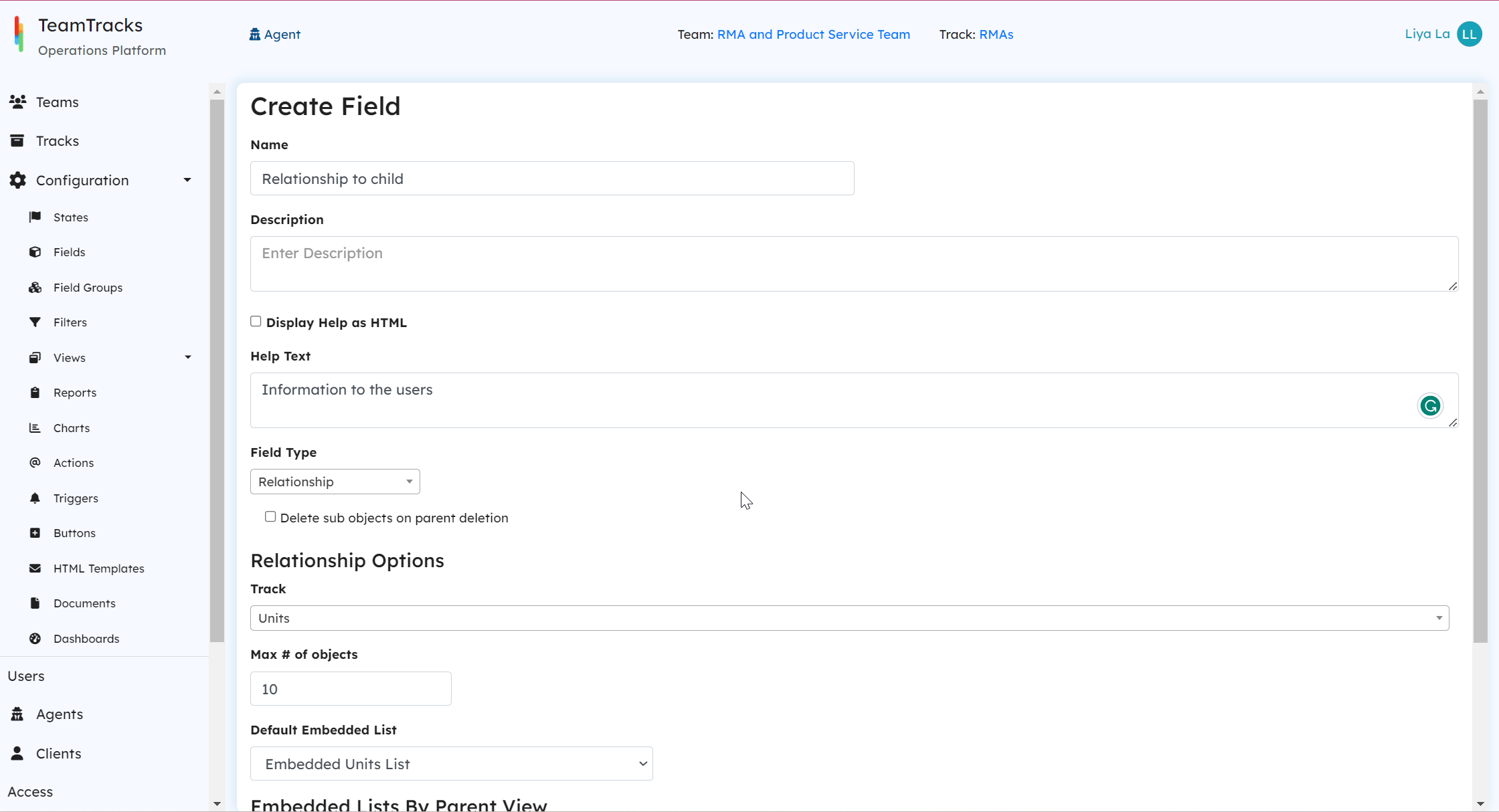Introduction
The relationship field allows you to establish a connection between two tracks. If you've set up a relationship field in the parent track that links to another track (let's call it the child track), you're essentially defining a connection between these tracks. This field enables you to display information from the child track as a list within the parent track and even create new items in the child track directly from the parent track.
Steps to Create a Relationship Field
Provide a Name and Description of your Relationship Field. You can also include helpful instructions to guide the user using Help Text. Simply enable the check box “Display Help as HTML” to display the help text in HTML format.
- Select Relationship as Field Type.
- Checkbox “Delete sub objects on parent deletion”: Enabling this checkbox will ensure that when you delete a parent object, the system will also remove all the child objects created under it.
- Choose the Track (child track) you want to connect to this track.
- You can specify the maximum number of objects that can be created under the parent object using the "Max # of objects" field. If this field is left empty, there won't be a limit.
- Select the Default Embedded List. This dropdown will show all the predefined embedded lists in the child track. It's a mandatory selection as this list will be used later to display information about the child objects and allow us to create a new child object.
- Click on Create button.
 Admin Interface: Create Field Screen
Admin Interface: Create Field ScreenEmbedded Lists by Parent View
You have the ability to customize the information within child objects and control the permissions for these objects as they appear in the parent object's views using the "Embedded Lists By Parent View" feature. This allows you to define which list is displayed for each view separately.
For example, in the screenshot below, we are configuring the Service Rep- Display View of the parent object to display the “Embedded Unit List” of child track.
 Admin Interface: Create Field Screen
Admin Interface: Create Field ScreenField Updates
Another valuable feature is field updates, which allow you to link child track fields with the parent track fields. For instance, if you want to access the parent object ID in the child track, you can do so by passing the parent object ID value to the child track. This can be accomplished by configuring field updates.
- Click the + icon.
- Choose the child object field you wish to update.
- Select the parent object field you want to pass down.
 Admin Interface: Create Field Screen
Admin Interface: Create Field Screen